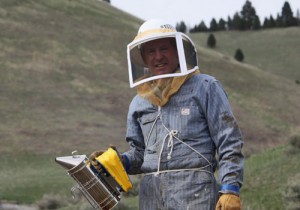 I don’t know why it is, but it seems that whenever I am learning something new it is generally a stressful experience. When we decided to bail hay for the first time and thought about using the mower, the side-delivery rake and the bailer caused me some sleepless nights. It was a huge learning curve, but at the end of hay bailing season we had our entire winter’s hay bailed and put up in the barn. Through the years I’ve seen people get paralyzed by things they hadn’t done before and as a result they ended up lived status quo, non-adventurous lives. I figure the best way to learn anything is to suck up your fears and step out in faith, even though you may not do it exactly right the first time. I always seem to learn best along the way and call the bumps and bruises learning experiences. Our latest venture here has been learning about beekeeping and it is an art that I honestly had zero experience with.
I don’t know why it is, but it seems that whenever I am learning something new it is generally a stressful experience. When we decided to bail hay for the first time and thought about using the mower, the side-delivery rake and the bailer caused me some sleepless nights. It was a huge learning curve, but at the end of hay bailing season we had our entire winter’s hay bailed and put up in the barn. Through the years I’ve seen people get paralyzed by things they hadn’t done before and as a result they ended up lived status quo, non-adventurous lives. I figure the best way to learn anything is to suck up your fears and step out in faith, even though you may not do it exactly right the first time. I always seem to learn best along the way and call the bumps and bruises learning experiences. Our latest venture here has been learning about beekeeping and it is an art that I honestly had zero experience with.
I made a friend named Mike Lute who Nancy and I met while making a close connection in the Minneapolis airport about six months ago. Mike works for John Deere and was on a business trip to teach a seminar in Iowa. It was a short encounter but we discovered that Mike attended the Vineyard Church in Boise (unbeknownst to us we were his pastors), and he and his wife Rena love country living as much as we do. We also learned that he shared an interest in learning about bee keeping like Nancy and I did so we decided to tackle the new challenge together.
Last Saturday Mike and I attended a beekeeping class in Fruitland, Idaho at The Honey Store and each of us purchased our first batch of honey bees. The following is a blow by blow account of the process we went through from picking up the bees to getting them established in our hives.
1. Mike found out about a retired beekeeper in Oregon who was selling a barn full of used hive boxes and frames. He called me and asked if I was interested and picked up enough for both of us. They needed cleaning up and the installation of new foundations. Foundations are sheets made of plastic or wax that provide the bees with a foundation to build their comb. Nancy went on-line and purchased not only new foundation material, but a bee vale, a smoker, and a beekeepers tool that I have learned to really value.
2. The second part of the adventure was to learning a few things about bees. We attended a seminar at the Honey store in Fruitland which was invaluable. I realize now that without it I wouldn’t have had a clue as to how to get started. Mike and I were both surprised to see how many other folks where there for the same reason. We all suited up in our brand new hats, vales and gloves and spent the entire morning looking in hives as experienced commercial beekeepers demonstrated how to transfer bees and establish a new hive. We learned about bee behavior, nutrition and how to identify the queen. At the end of the morning my brain was on overload, but both Mike and I went home with a “NUC” full of bees. (A NUC is a small box and frames jammed full of workers, drones and a queen.)
3. When I got home I fired up my new smoker and carried the NUC to my hive. I had placed my hive close to a small creek just below my orchard and garden. Smoking the bees has a way of calming them down so that they can be more easily worked. After giving them a few puffs I used my bee tool and gently pried open the small blue box. To be honest it was kind of an anxious moment and my adrenaline was pumping as I strained to remember all the stuff I had just been taught. So far so good.
4. Prying the first frame loose I gently lifted it out of the NUC, examining it to see if I could spot the queen before setting it in place in our new empty hive. It wasn’t until the third frame that I actually managed to spot the queen which gave me a sense of accomplishment. Knowing the queen was alive and well meant that my hive had a good chance of surviving. I also filled the feeding tray with syrup that we had brewed up on the stove beforehand. The syrup is a mixture of one part water and two parts sugar. It supplements the bees nutrition until the vegetation begins to bloom. Up here at Timber Butte nothing has started to bloom yet. The feeding try is a long thin container that is in the shape of a foundation frame and slides into the outer most frames space taking its place until the bees can feed themselves naturally.
5. I’m laughing when I say, “I’m a bee guy now” knowing that it will take a few years before I really get the hang of this new skill. Bees are an absolutely amazing part of God’s creation. Having learned the little bit I have, I see these little creatures as a great miracle. The thought of losing 50% of the honey bees in America because of the increased use of pesticides and chemical fertilizers or for whatever other reason within our control is a great crime and a very bad thing for humanity. (See entry #39 – “Revelation of a lone Bumble bee“) They are a part of the natural life function of our planet and I consider it a privilege to have the opportunity to be a steward of even one small community of them.
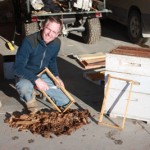
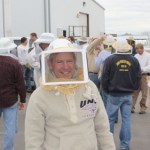

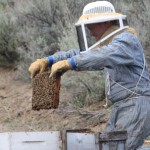
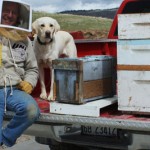
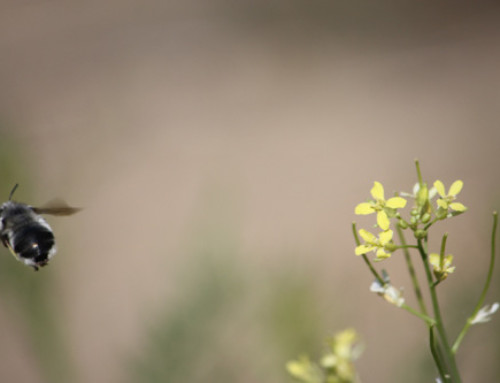
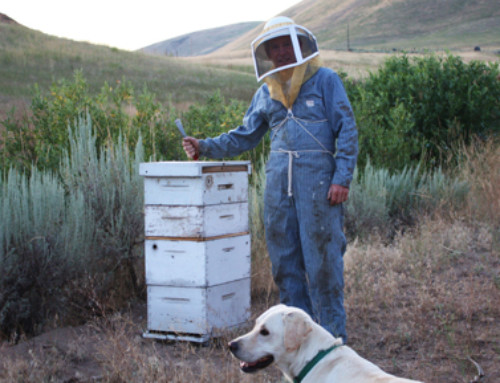
Leave A Comment
You must be logged in to post a comment.